Second Quarter IMLS Grant Update for 2023
To celebrate the completion of another six months of work on our 2022-2024 IMLS Museums for America – Collections Stewardship Program, the Conservation staff are showcasing some standout objects we have conserved. We are now on the second year of a two-year project to conserve, rehouse, relocate and create fully digital catalog records for 1,800 objects related to agriculture and the environment that have resided in the Collections Storage Building. Many of these objects will be used to support our Edible Education and Green Museum initiatives.
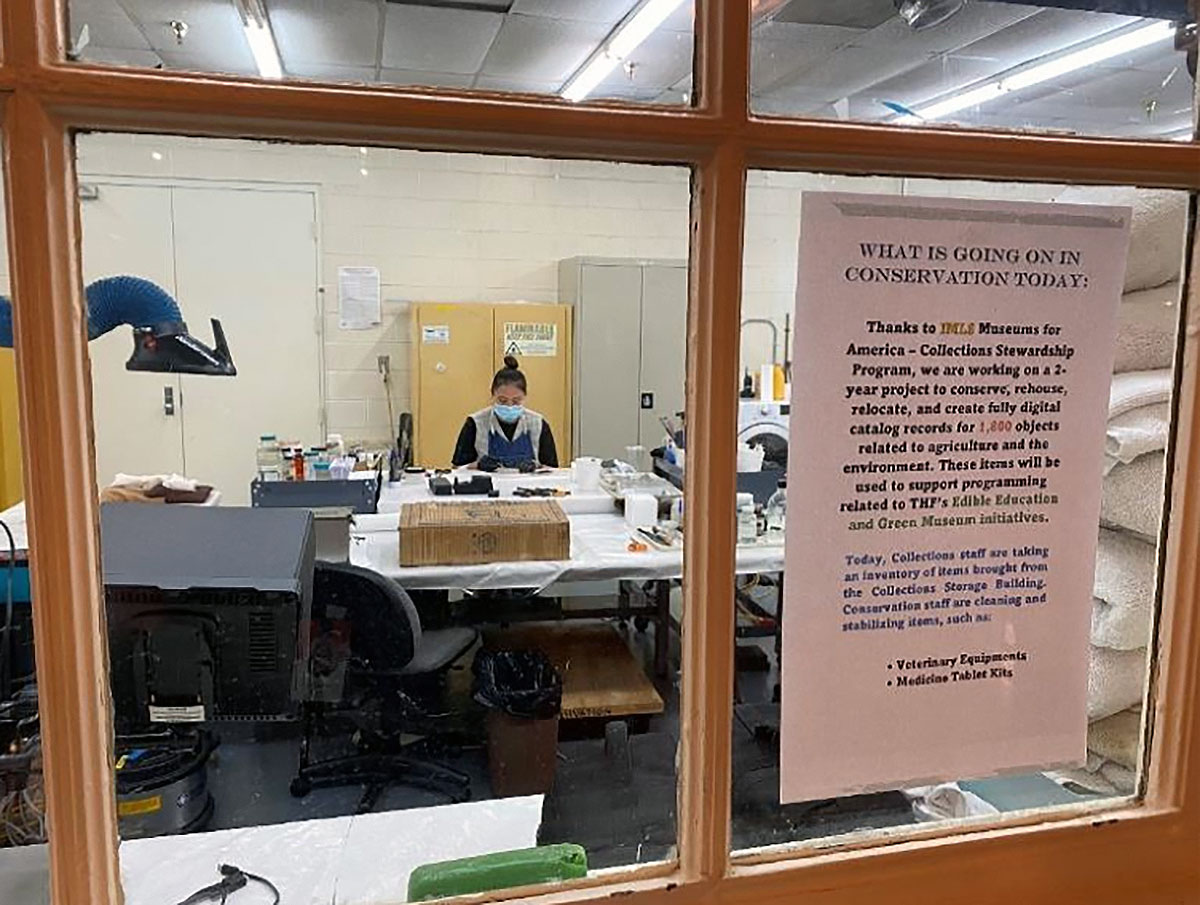
Stop by the back of the museum, near the steam engines, to get a peek through the windows of the Conservation lab and see what staff are currently conserving.
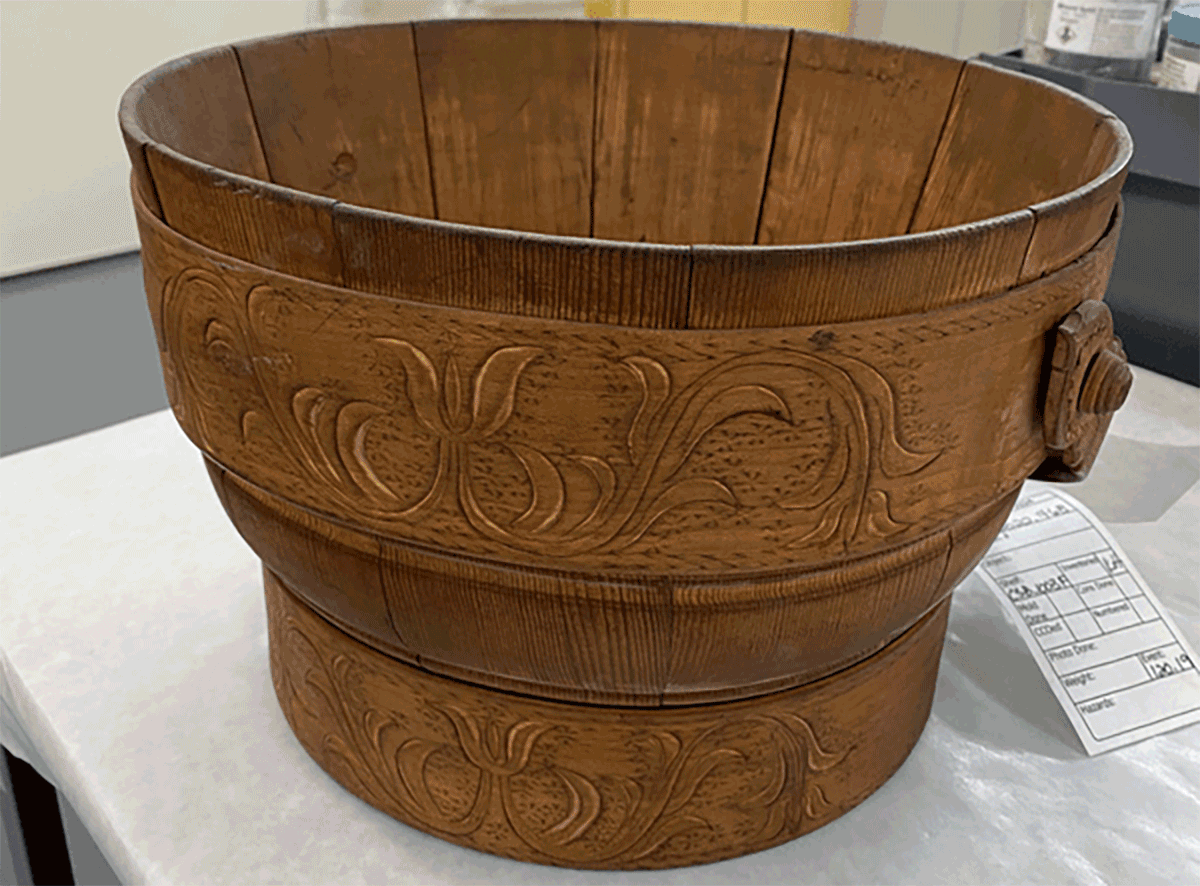
This decorative milk pail from the Gwinn Dairy Collection had layers of dirt and debris on the surface to be removed. What was found on the underside was quite a surprise.
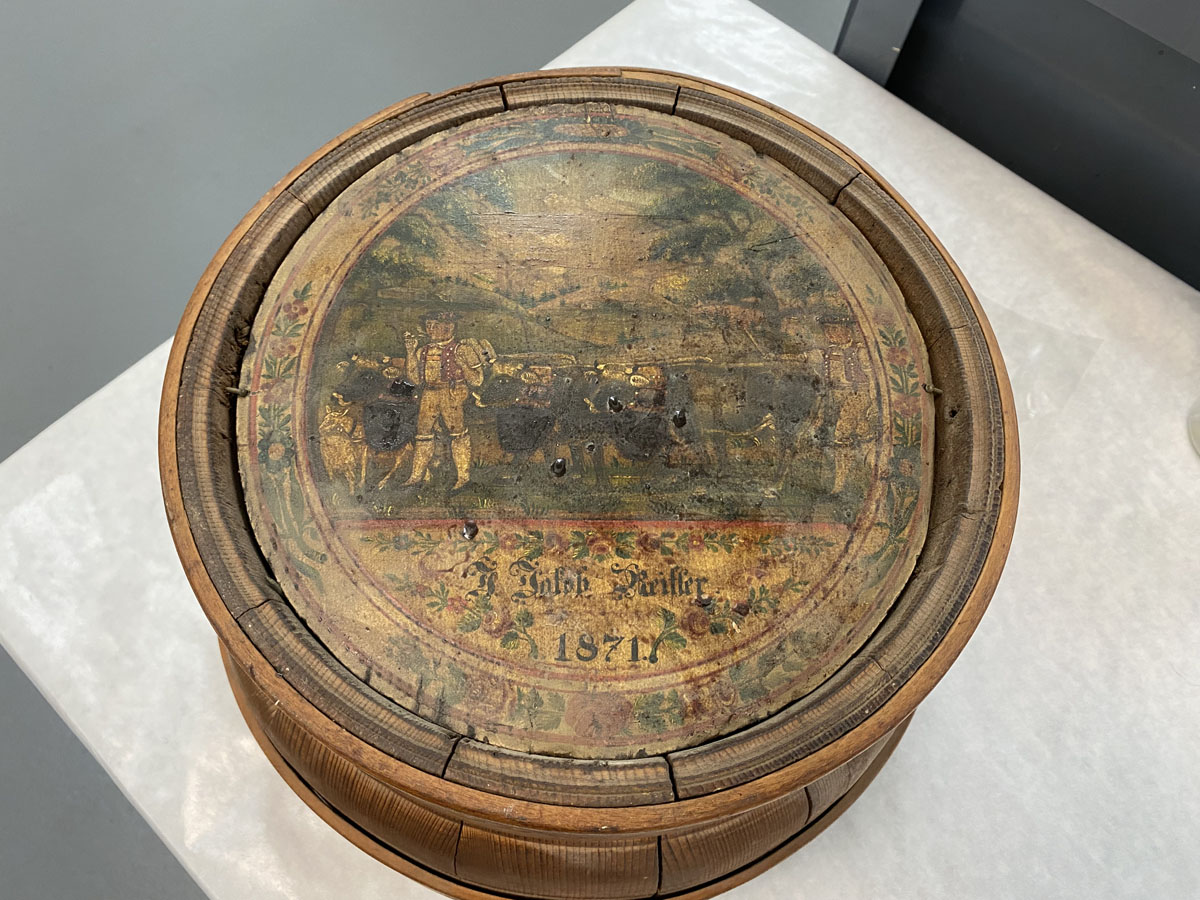
A painting of a mountain landscape with two men herding cattle is attached to the bottom of the milk pail. Known as herdsman art or Appenzell peasant art, the traditional practice begun in the 19th century is used to commemorate the herding of cattle to pasture in the Alpine region of Switzerland by attaching painted wooden plates to the bottoms of milk pails.
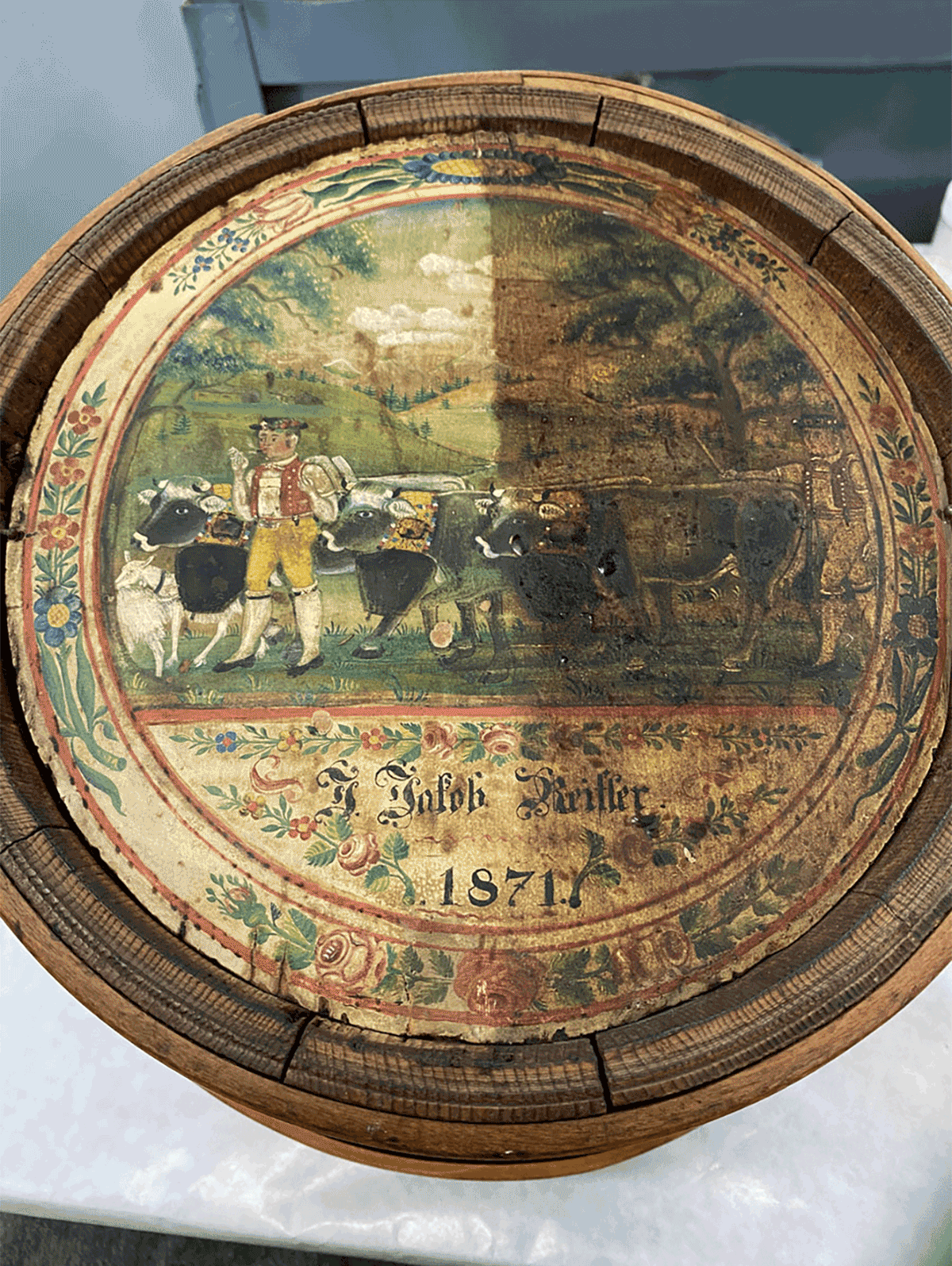
While cleaning to remove the heavy yellowed resin varnish, it was obvious how much the fine details of the image, including gold leaf in the herdsmen’s attire, were being obscured. Areas of paint loss were touched up, and a fresh coat of protective varnish was applied to bring this beautiful landscape to life.
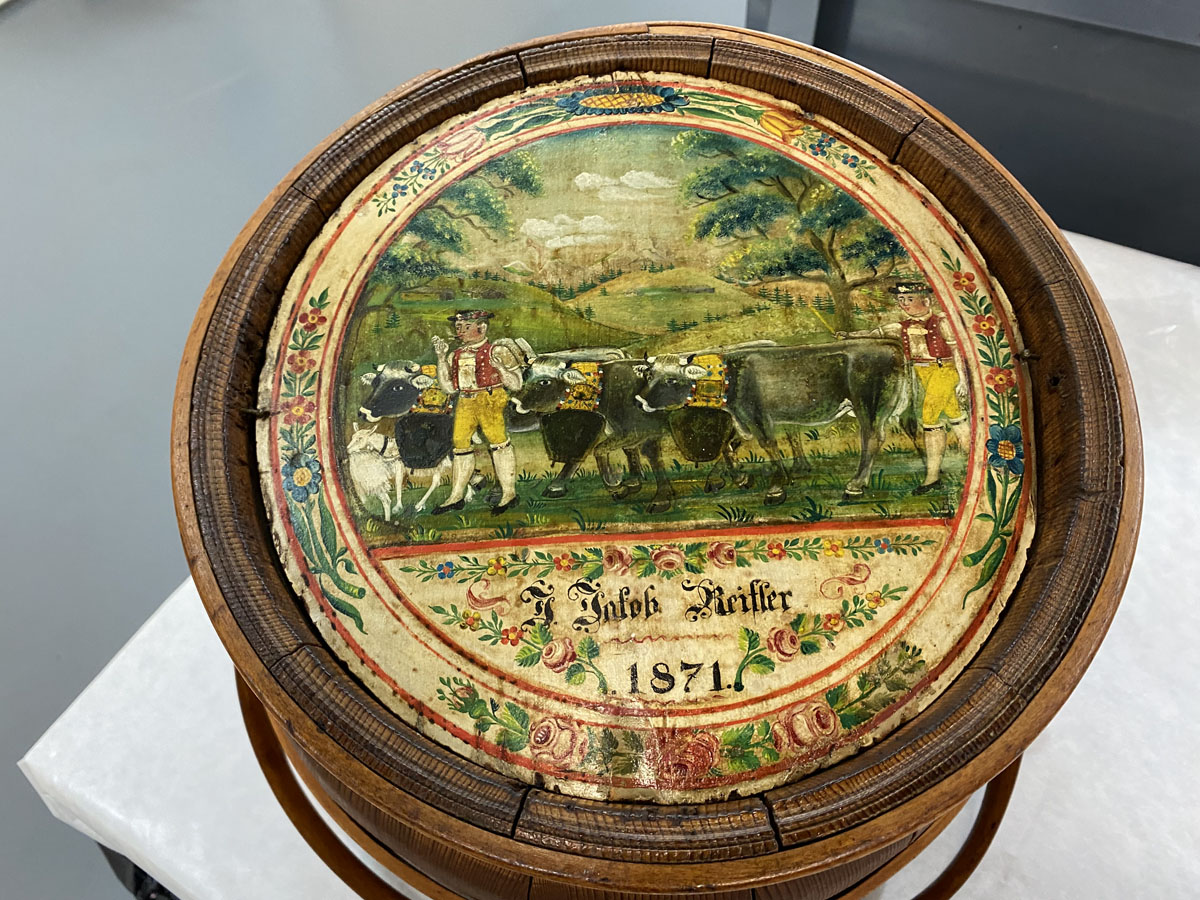
Our milk pail commemorates Jakob Keiffer’s herding event in 1871.
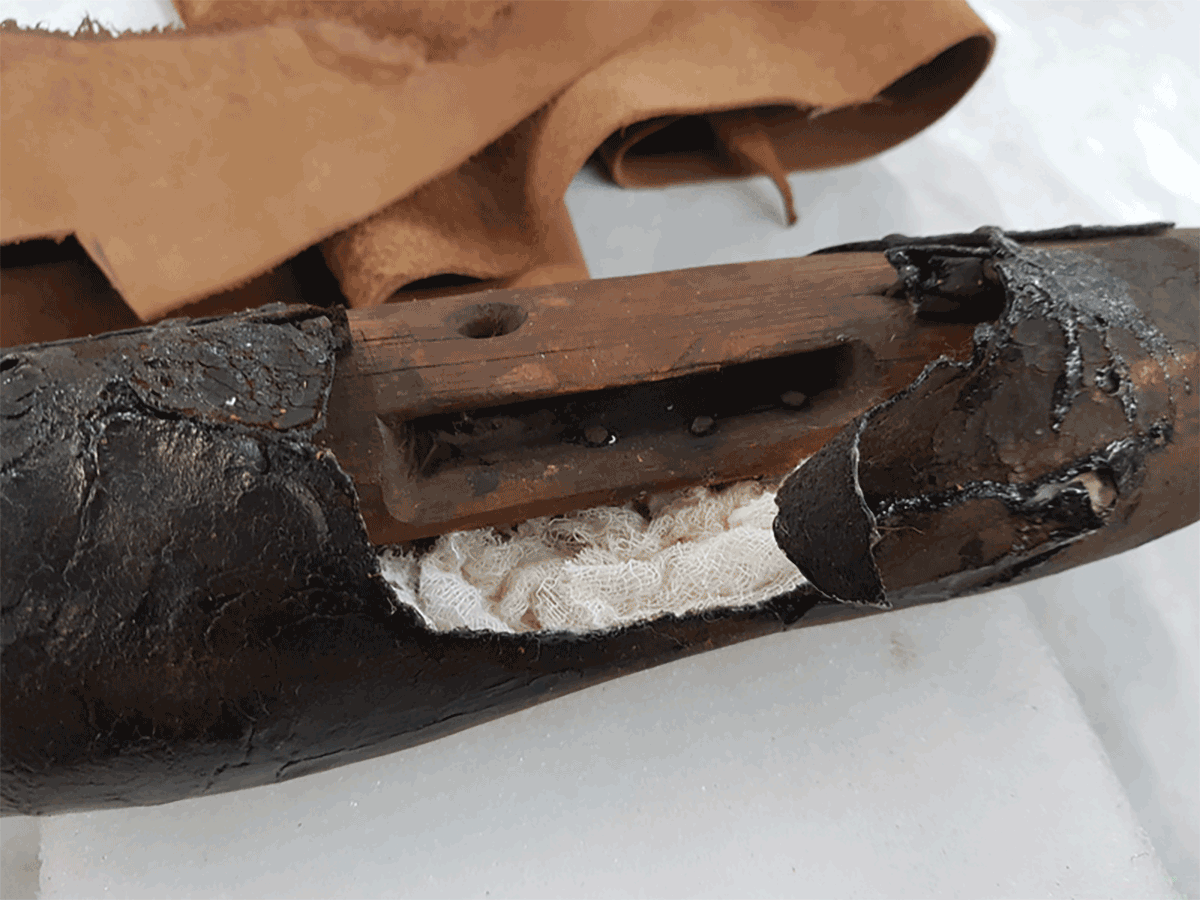
This horse collar has two pieces of wood, padded with leather on the sides, and connected at the top and bottom by leather thongs. The wood pieces fit on either side of the horse’s neck. A section of leather had a large loss and the stuffing inside was exposed and constantly losing material. Cotton fabric was added to fill out the loss and support the original leather.
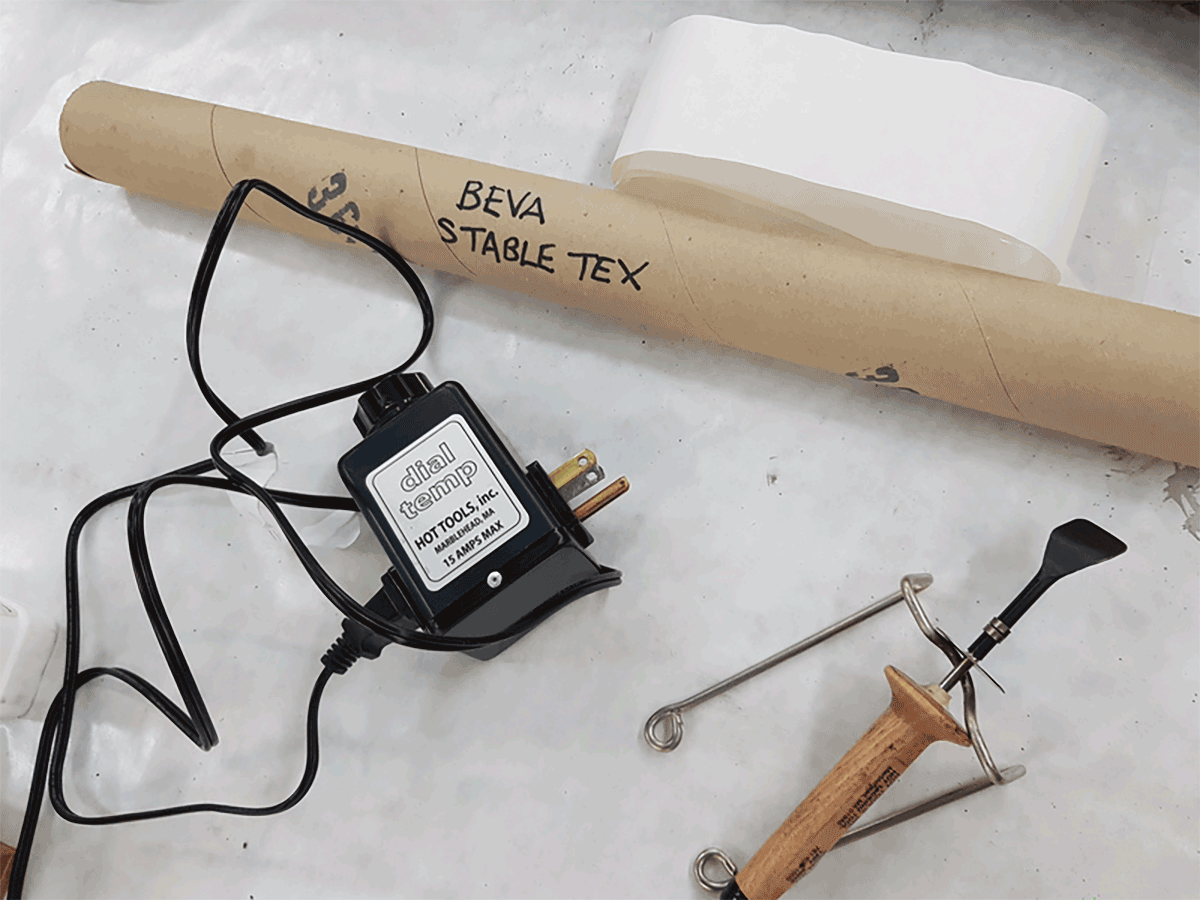
The damaged spot was restored with a new piece of leather similar in color and painted to match. The added leather piece is held in place with a thermoplastic adhesive film heated with a tacking iron. Gaps between the original and new leather pieces are filled with tinted wax.
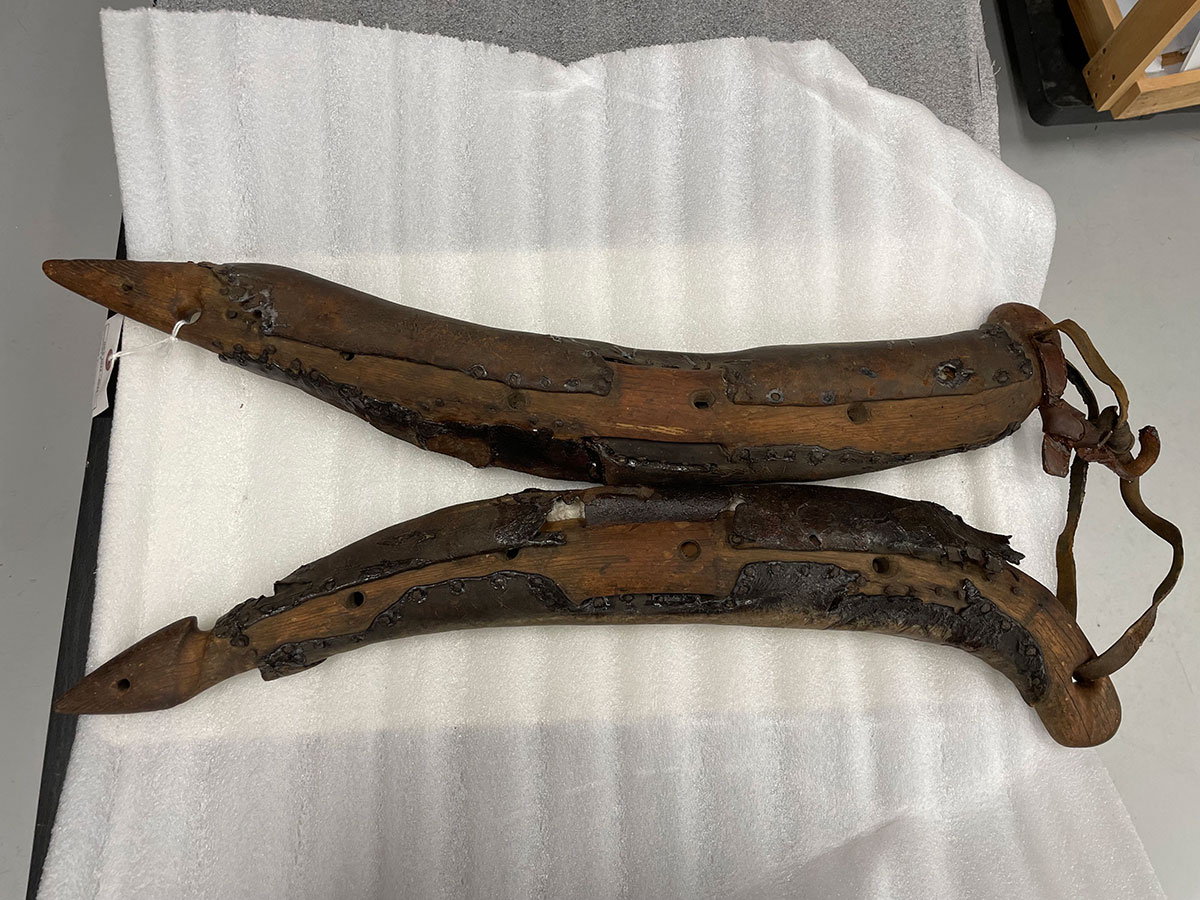
After treatment completion, the overall damaged sections of leather are stabilized and the collar is securely connected with the original leather strap through the boring holes.
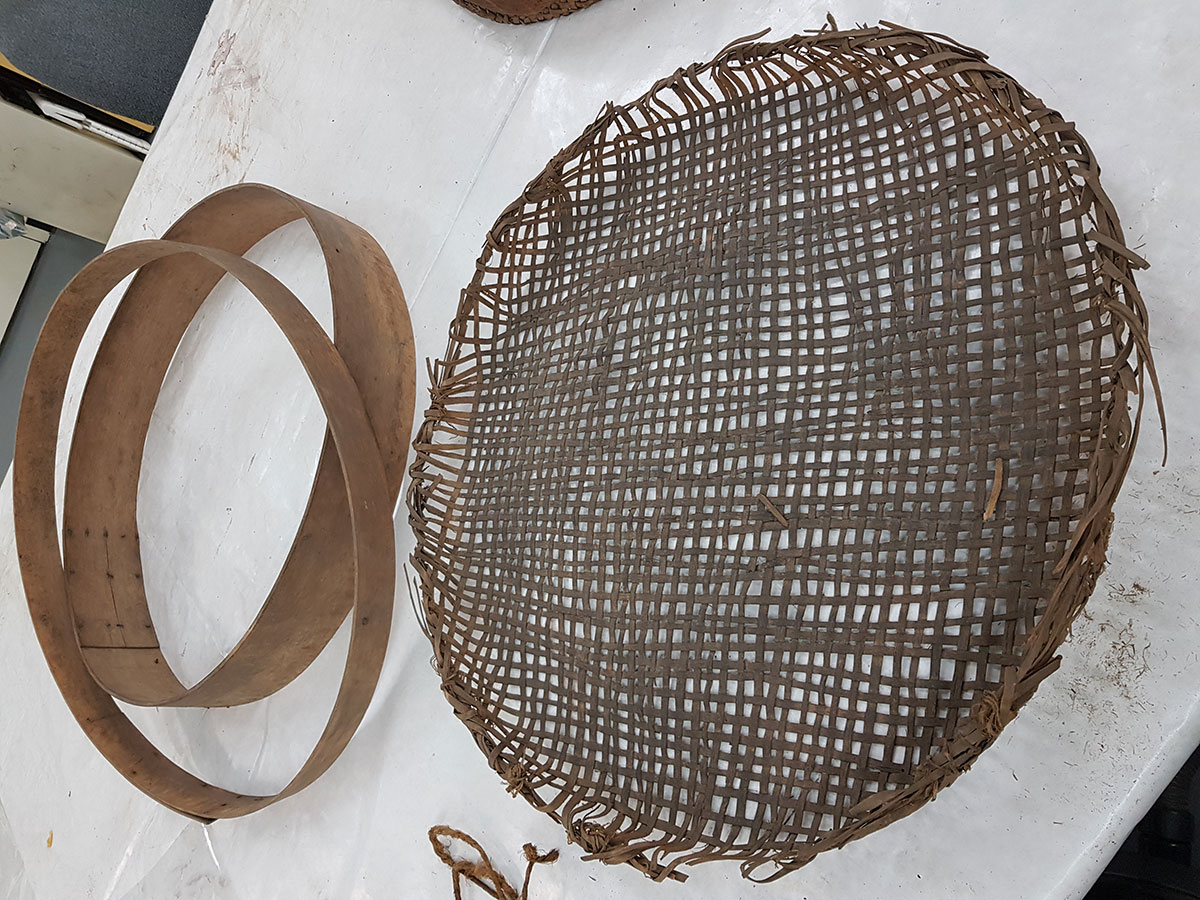
This is a grain sieve consisting of a bent wooden frame with a plain-woven splint bottom. The mesh of the sieve is approximately .15 inches. It was donated to the museum on January 1, 1931.
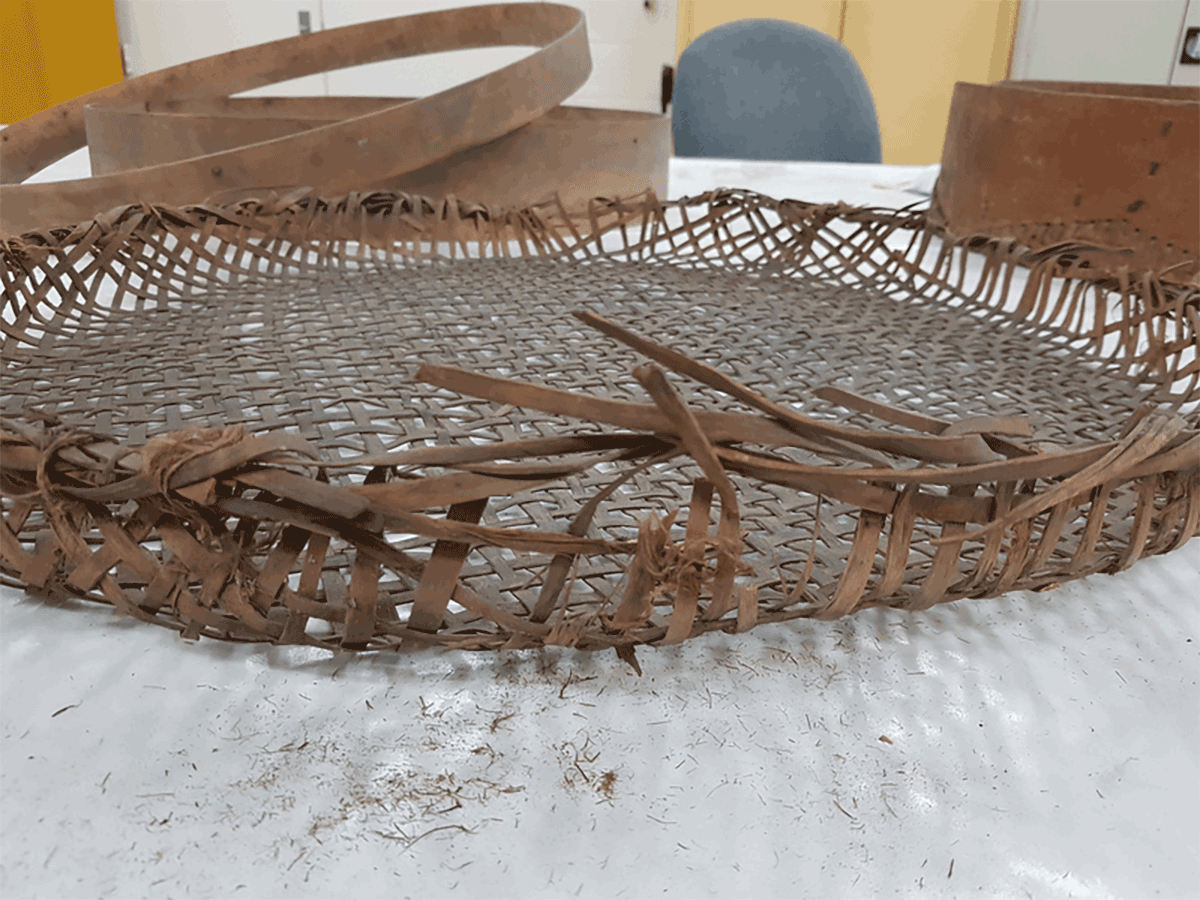
The object was found in storage separated into three pieces. The overall surface of the object was very dusty, and the edge of the woven bottom was weak and fragile to touch. The dirt on the surface was removed cautiously with distilled water and cotton pads.
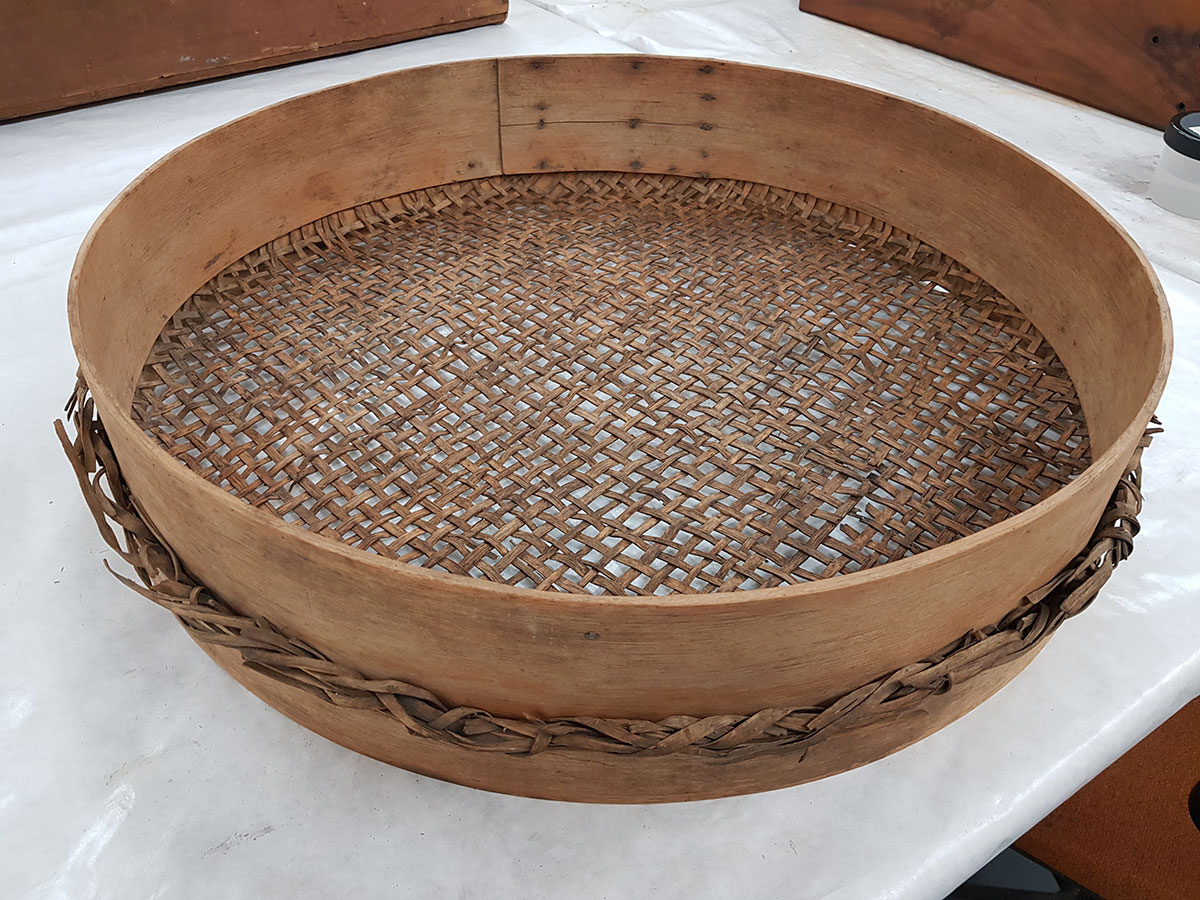
After cleaning, all pieces were assembled, with the sieve sandwiched between the frames.
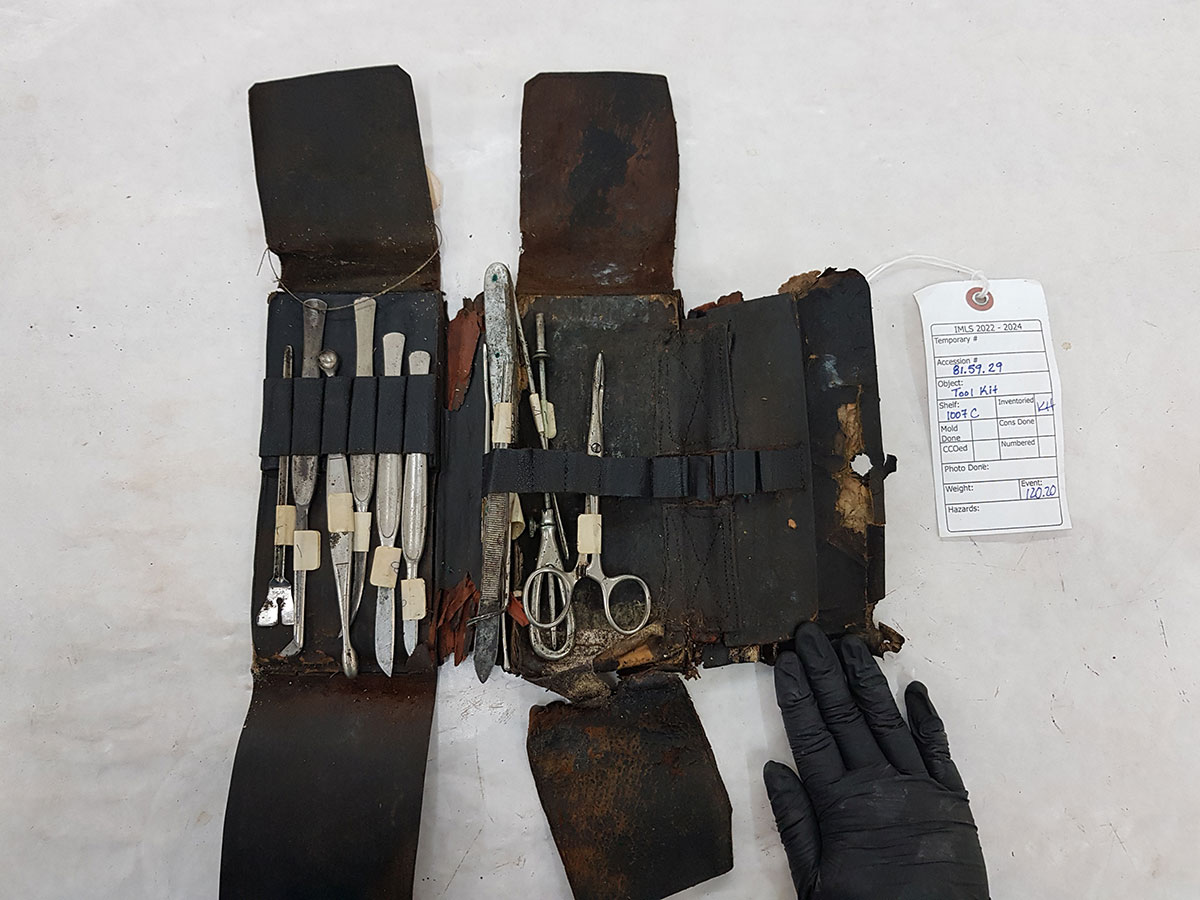
This tool kit with a damaged leather case is for veterinarians. There are 12 metal surgical instruments included, such as scissors, tweezers and surgical blades.
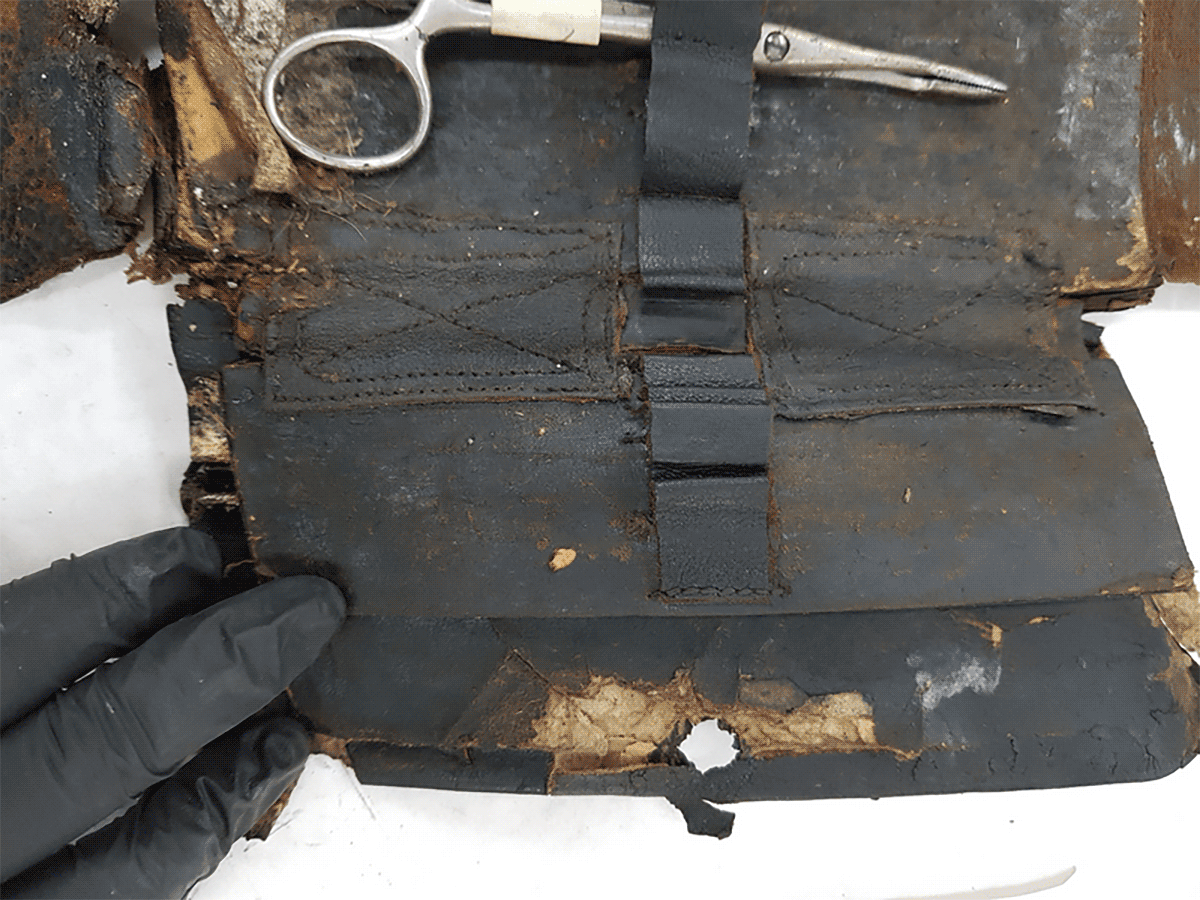
The metal equipment inside was labeled with stickers adhered to the surface. All pieces were very rusty but structurally fine. Multiple areas of the leather case were torn and lost, and traces of white fabric were found on the edges where it had been previously mended. The overall surface of the leather was dirty, weak and very fragile. The clasp had verdigris corrosion built up on the surface.
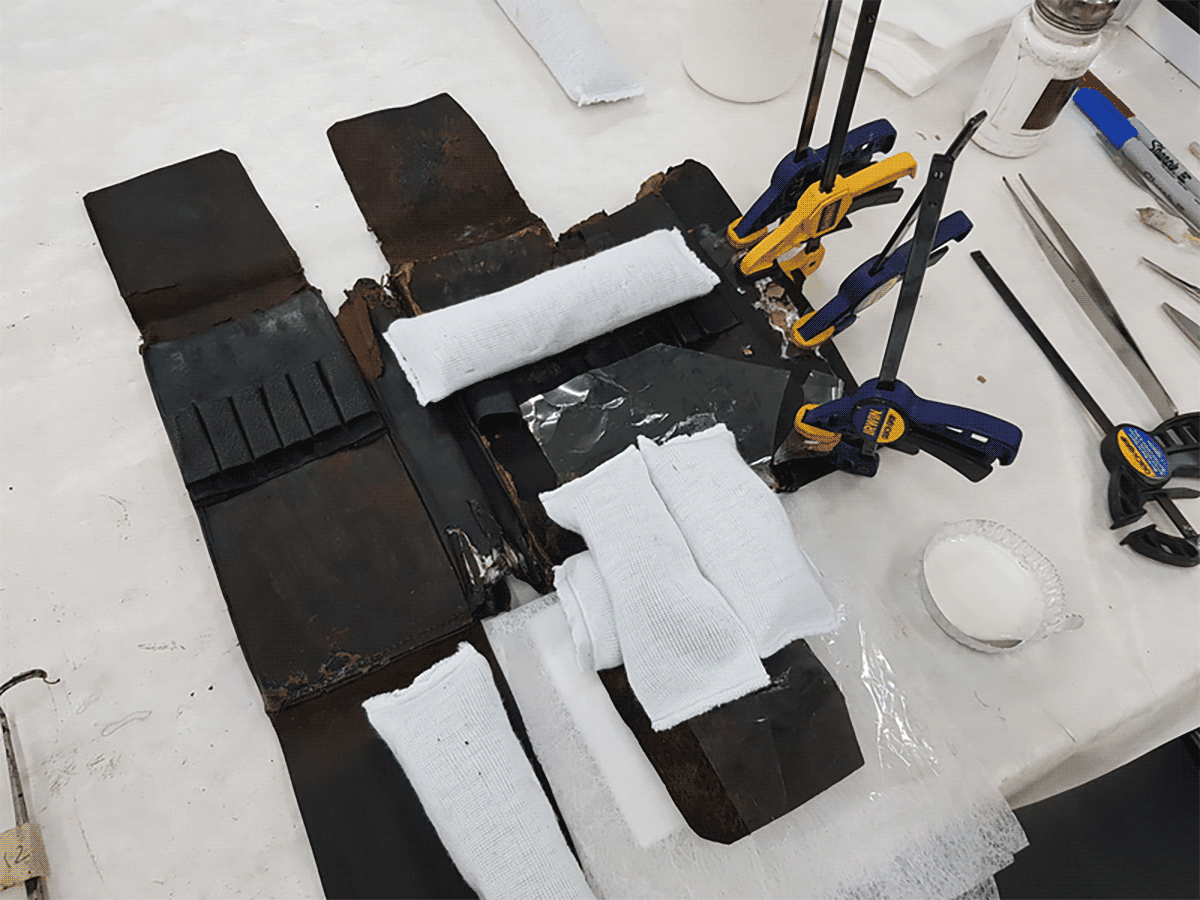
The torn and lifting sections of leather were glued down with supporting polyester sheets. Acrylic paint was used to color match the polyester sheets to the original leather. The metal tools were cleaned with mineral spirits and the corrosion on the surface chemically stabilized by tannic acid solution.
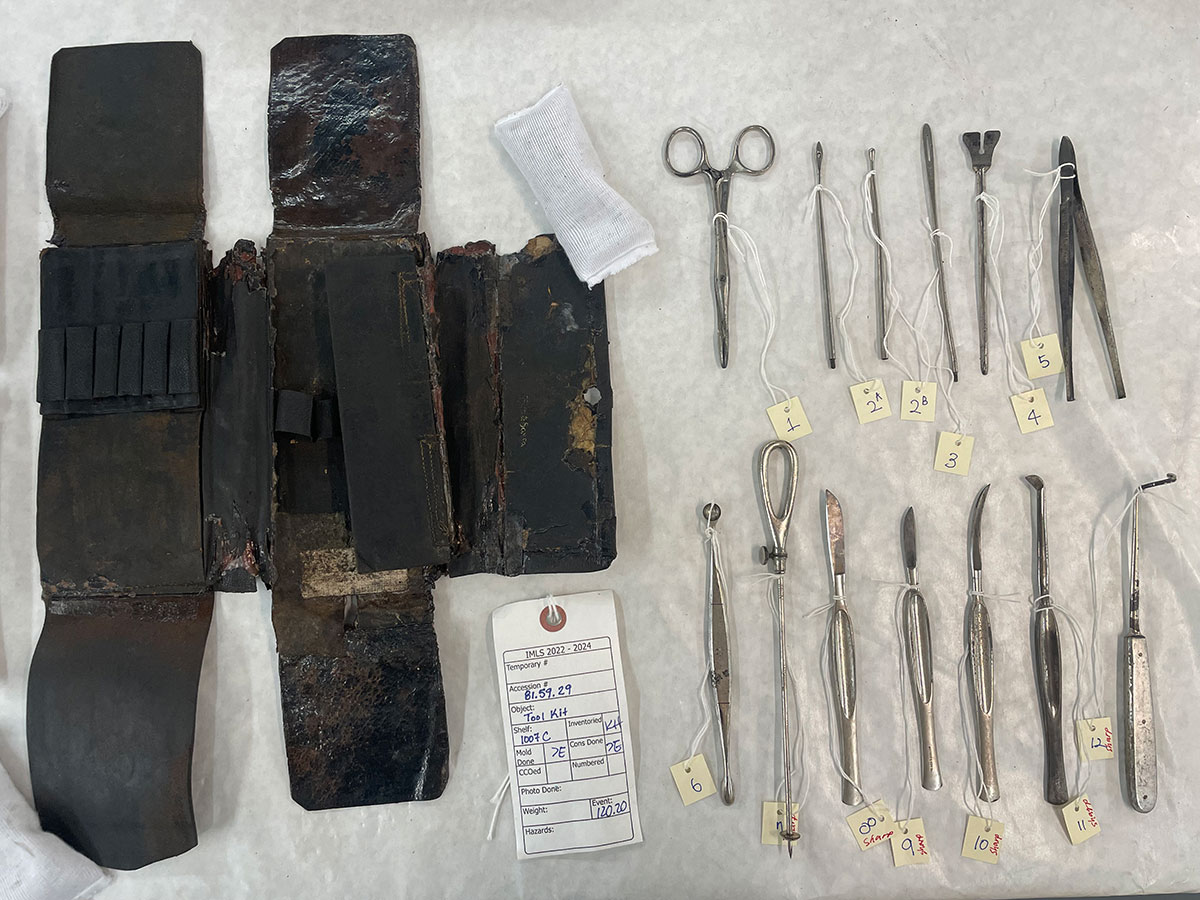
The equipment is now stored separately from the leather case to prevent further damage to the leather’s condition. New number tags are tied to each tool instead of stickers, so as not to damage the metal.
Jee Eun Lim is IMLS project conservator at The Henry Ford. Marlene Gray, senior conservator, is assisting Jee on the grant.

